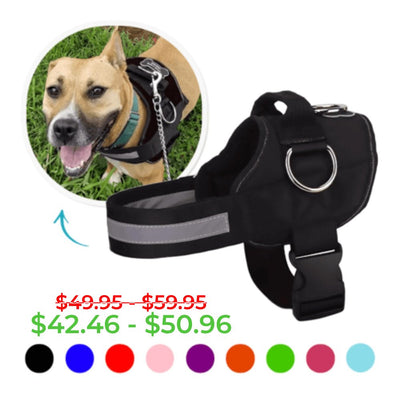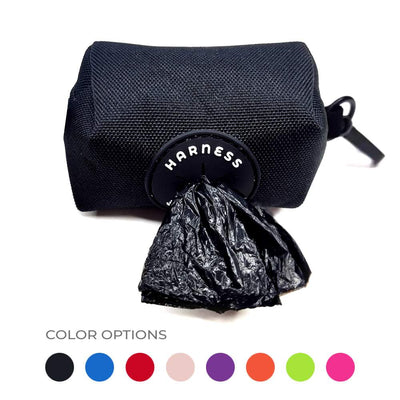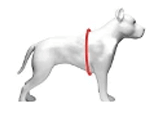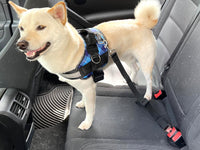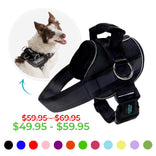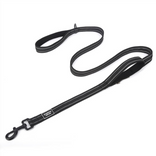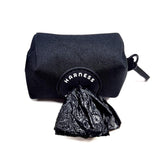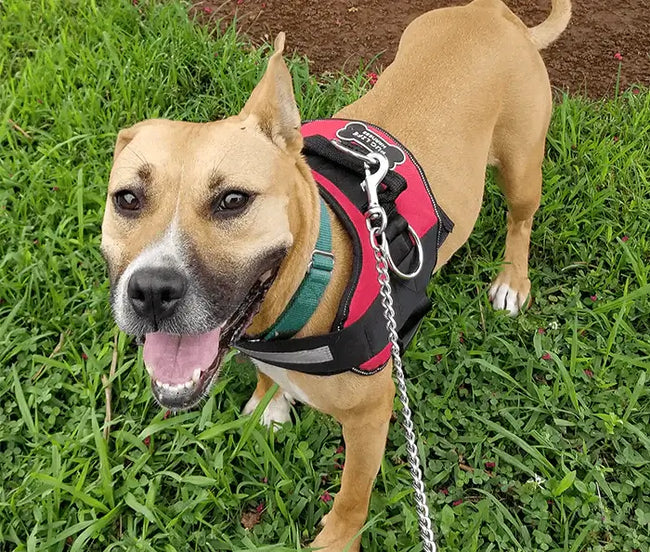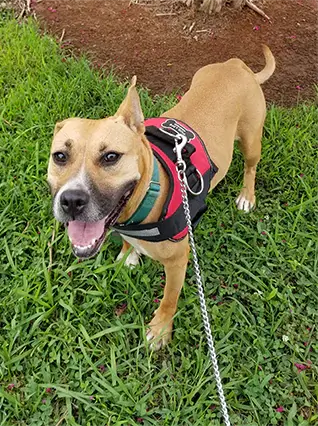How to Train Your Dog to Stop Begging (For Good!)
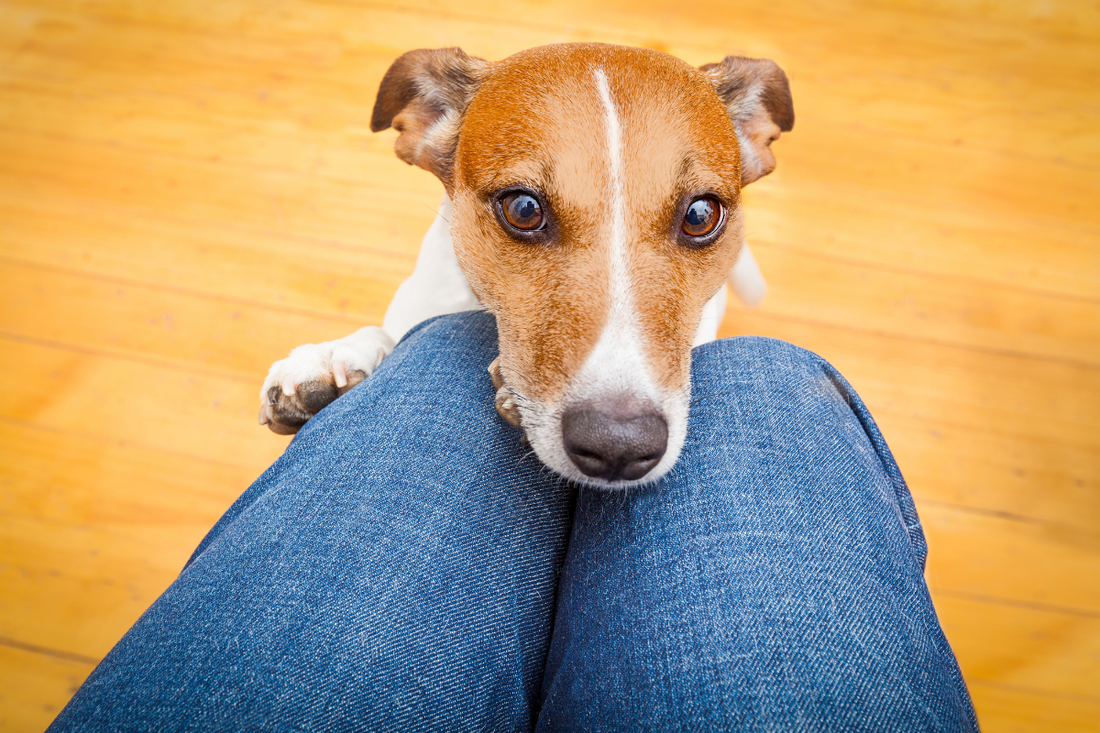
It often starts with a stare—those big, sad puppy eyes locking onto your plate. Maybe a soft whimper follows, or a paw gently taps your leg. Before you know it, you’re slipping your dog a leftover carrot or a small bite of steak. While the occasional healthy snack is generally fine for dogs, encouraging begging can quickly turn mealtime into a frustrating experience. Fortunately, begging isn’t a permanent habit. With consistency and patience, you can teach your dog to stay calm and polite during meals—or better yet, prevent the behavior from developing in the first place.
Why Do Dogs Beg?
For dogs, food is one of the most powerful motivators. Their keen sense of smell allows them to detect food from a distance, and their natural instincts drive them to seek out whatever they can find. While dogs don’t understand that human food isn’t meant for them, they quickly learn that begging can result in tasty rewards. If a dog receives food after begging—even once—they’ll likely try again, believing persistence will pay off. Over time, this behavior can become a habit that’s hard to break.
How to Stop a Dog from Begging

If your dog hovers near the table, whines, paws at you, or barks for food, there are several techniques you can use to curb this behavior:
1. Teach an Alternative Behavior
Training your dog to settle in a designated spot—such as a mat or dog bed—can help eliminate begging. Before meals, guide your dog to their spot and ask them to lie down. While you eat, reward them occasionally with small treats for staying calm and relaxed. Keep their mat close to the table so you can reward them without getting up.
As your dog improves, gradually increase the time between treats until they can remain in place throughout the meal. Eventually, you can reward them only at the beginning and end of your meal. With practice, your dog will associate mealtimes with resting in their spot rather than begging.
2. Provide Mental Stimulation During Meals
Keeping your dog occupied during meals can shift their focus from your food to their own activity. Consider feeding your dog at the same time you eat, using interactive food toys that challenge them to work for their kibble. Puzzle toys, treat-dispensing balls, and snuffle mats are great options for engaging their minds and keeping them busy.
For wet food, try using a lick mat or slow-feeder bowl. Spreading peanut butter, yogurt, or mushed banana on a lick mat can keep your dog entertained long enough for you to finish your meal in peace. These activities not only prevent begging but also provide mental stimulation and enrichment.
3. Establish Physical Boundaries
If your dog tends to get too close during meals—placing their head in your lap or jumping up to see your plate—it’s essential to set physical boundaries. Use commands like “stay” or “go to your bed” to keep your dog a few feet away from the table.
If your dog struggles with staying put, consider using a crate or exercise pen during meals. Provide food toys or chew treats inside the crate to keep your dog occupied and relaxed. Over time, they’ll learn that mealtimes are for enjoying their own food rather than begging for yours.
4. Ignore the Begging
If your dog is already in the habit of begging, ignoring the behavior can help extinguish it. When your dog begs, avoid eye contact, speaking, or reacting in any way. Be prepared for what’s known as an “extinction burst,” where your dog may escalate their begging behaviors—whining louder, pawing more insistently, or barking more persistently—before eventually giving up.
It’s crucial not to give in during this phase. If you reward your dog after they escalate their begging, they’ll learn that more intense behavior gets results. Staying consistent is key; with time, your dog will realize that begging no longer works and will stop the behavior.
However, ignoring begging can be stressful and confusing for dogs, especially if they’ve been rewarded for it in the past. For a more positive approach, focus on teaching alternative behaviors and keeping your dog occupied during meals.
How to Prevent a Dog from Begging

The best way to prevent begging is to avoid reinforcing the behavior from the start. If you have a puppy or a new rescue dog, follow these guidelines to prevent begging from becoming a habit:
-
Don’t Feed From the Table: Avoid giving your dog food directly from your plate or while you’re eating. Dogs quickly learn to associate mealtimes with free handouts, which encourages begging.
-
Be Consistent with Snacks: Begging can also develop when you share snacks outside of mealtimes. If you give your dog food while standing at the counter or eating on the couch, they may start begging whenever you eat. Consistency is essential—only feed treats in designated areas and on your terms.
-
Use Food Toys for Distraction: Offer food-filled toys during your meals to keep your dog entertained and focused on their own food. Layering toys with frozen peanut butter, mashed banana, or their regular kibble can hold their attention for longer periods.
Tips for Sharing Food Without Encouraging Begging
Sharing occasional, dog-safe foods in moderation is perfectly fine, as long as you do it in a way that doesn’t promote begging. Here’s how to share food without reinforcing bad habits:
-
Use a Designated Spot: Teach your dog to go to a specific spot, like a mat or dog bed, and wait patiently. Reward them with a small bite of food only after they’ve stayed calm and quiet. This approach encourages impulse control and polite behavior.
-
Limit Portions: Keep shared food portions small to avoid weight gain and health issues. Treats should make up no more than 10% of your dog’s daily calorie intake, with the remaining 90% coming from a balanced diet.
-
Choose Healthy Options: Stick to dog-safe foods like carrots, apples, broccoli, and lean meats. Avoid fatty, salty, or heavily seasoned foods, which can cause digestive problems and contribute to obesity.
Begging is a natural behavior for dogs, but it doesn’t have to disrupt your meals. By teaching alternative behaviors, providing mental stimulation, setting boundaries, and remaining consistent, you can help your dog develop polite mealtime manners. And if you can’t resist sharing a healthy snack now and then, just be sure to do it in a way that reinforces good behavior rather than encouraging begging. With patience and practice, you and your dog can enjoy mealtimes together—without the puppy dog eyes.
If your dog behaved and did not beg during your meal time, reward them with a treat or walk!

At Joyride Harness, we believe walks should be fun and stress-free—for both you and your pup. That’s why we designed a harness that helps curb pulling without discomfort. Unlike traditional options, our harness avoids putting pressure on sensitive areas, making it a game-changer for leash training. Plus, it’s built to fit dogs of all shapes and sizes!
Make every walk smoother and more enjoyable—shop the Joyride Harness today!
--
What you’ve just read is a sampling of blog posts we offer at Joyride Harness. We cover current events, informational posts, interviews, and more! You can find more content including tips and tricks and how-tos for caring for your dog on our blog at this section.


